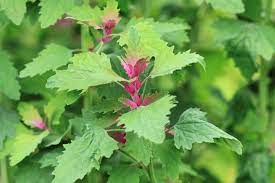No products in the cart.

Firstly, introducing Auscrops, a high-tech market vending company bridging farmers and customers together through market vendors. Click here to find out more about Spinach Tree as well fruit and vegetable offers.
Spinach Tree
Ever come across the term “spinach tree” and been puzzled? Let’s dive deep into understanding this mysterious term and what it represents in the gardening world.
Misnomers in Gardening
The world of botany is full of names that might lead you astray. Furthermore, the “spinach tree” is one such misleading title. In reality, there’s no tree that produces spinach. Nonetheless, there are plants that bear a close resemblance in taste and nutrition.
Exploring Chaya – The Spinach Cousin
Chaya, often known as the “Mexican tree spinach,” is what most refer to when mentioning a “spinach tree”. This perennial shrub, native to Mexico’s Yucatan Peninsula, has leaves that are very similar in taste to our beloved spinach.
Why Chaya?
Chaya is rich in protein, vitamins, and minerals. Additionally, it’s known for its resilience, growing in conditions where many other plants wouldn’t. Furthermore, this makes it an ideal choice for gardeners seeking a low-maintenance plant.
Preparing Chaya
Although chaya leaves resemble spinach, there’s a key difference in preparation. Raw chaya leaves contain toxic hydrocyanic acid. However, boiling them for 20 minutes makes them safe to consume. Moreover, once cooked, they can be used similarly to spinach in many dishes.
Growing Your Own “Spinach Tree”
To cultivate chaya:
- Choose a sunny spot.
- Ensure well-draining soil.
- Water moderately.
In a few months, you’ll have a fully grown shrub ready for harvest. Additionally, it’s a beautiful plant that can also serve ornamental purposes in your garden.
Benefits Over Traditional Spinach
Chaya, being a perennial, doesn’t need replanting annually. This can be a blessing for those who seek continuous harvests. Furthermore, its hardiness against pests makes it even more appealing.
Points of Caution
While chaya offers numerous benefits, it’s essential to remember the initial processing step. The leaves should never be consumed raw. Additionally, always use non-aluminum cookware when preparing chaya, as the combination can lead to digestive problems.
Wrapping Up
Gardening enthusiasts and food explorers alike might find chaya an interesting addition to their plant collection and menu. It offers a close taste to spinach, with the bonus of being a perennial. So, while the “spinach tree” might sound like a mythical entity, with chaya, we get quite close to this fantastical concept.
Click here to read similar articles.
 Français
Français 












